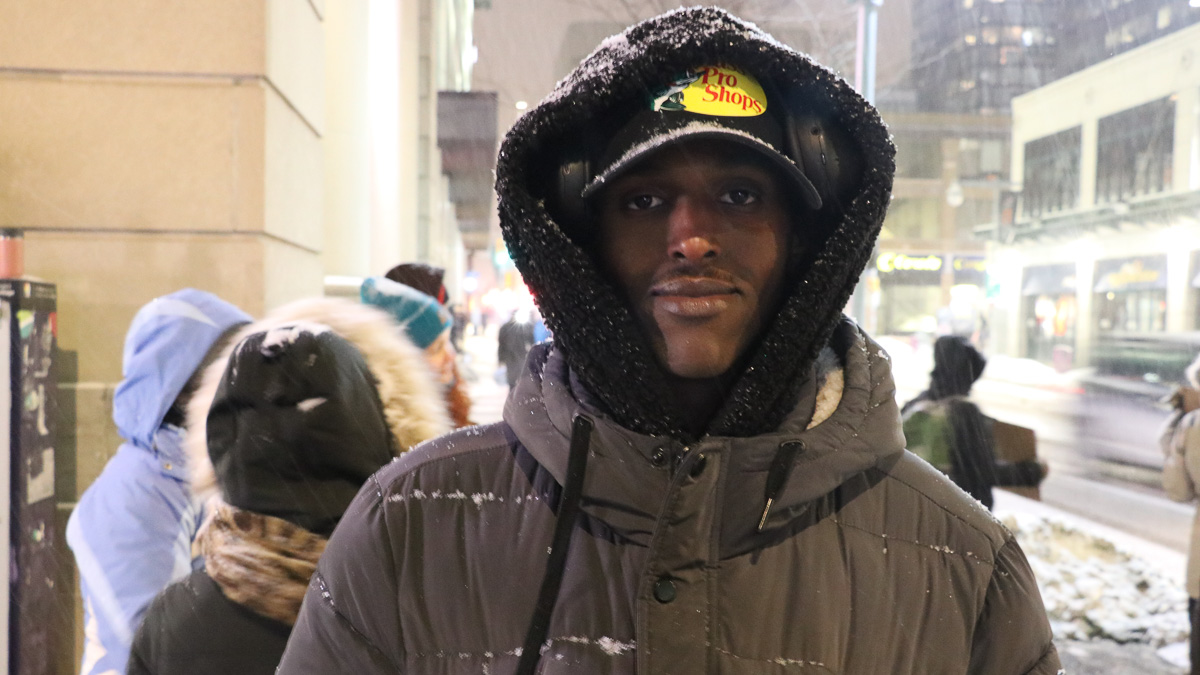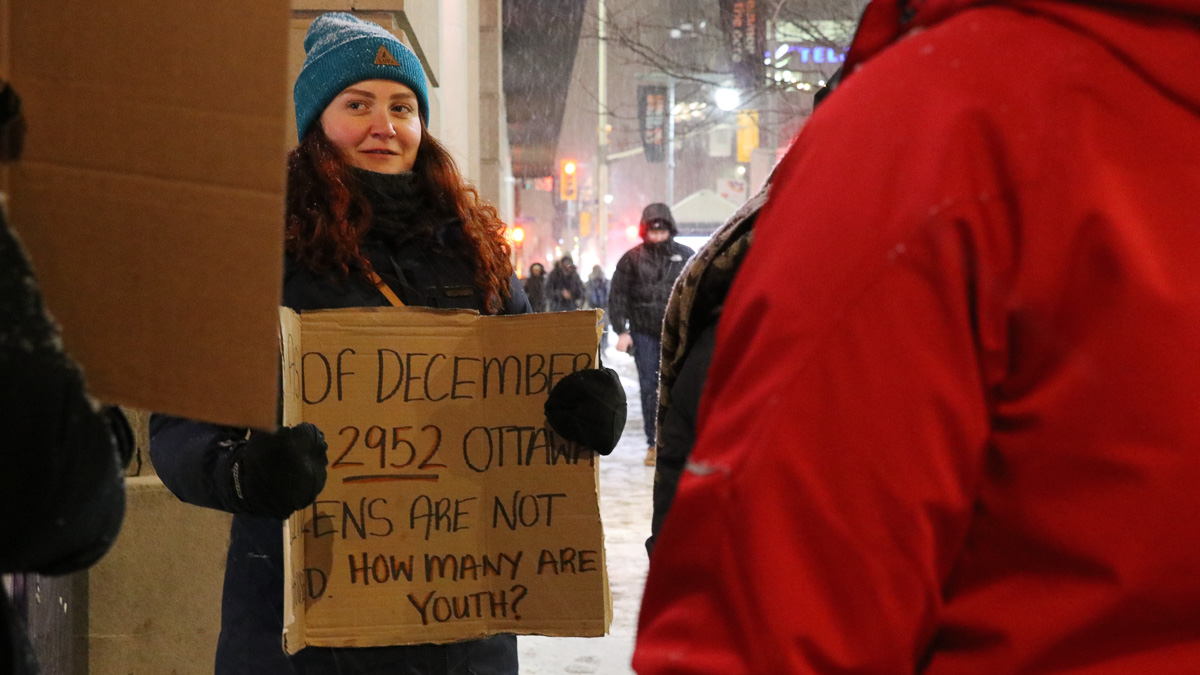In temperatures dipping to minus 18 C with windchill, staff and volunteers of Operation Come Home (OCH) spent 24 hours outside to raise funds and awareness for the organization’s programs for homeless youth.
Three hours into the challenge, everyone was in a chipper mood even as snow came down. As they danced to 2010s hits, OCH staff called out to passersby “Help end youth homelessness” and “Every dollar you donate helps youth in need.”
Most people rushed past, but a few stopped to learn more and make a donation. By the end of the challenge Jan. 30, they had raised $28,000.
Idris Isse knows the value of these funds. In March 2023, when he was 21, he became homeless.
His first stop was the Ottawa Mission where he had to sleep on the floor because there were no beds left.
“I couldn’t fall asleep because there were too many people, it was too many characters around and I felt unsafe,” he said.
While he struggled to sleep, he started googling services for homeless youth. There were government options, but they required appointments. Then he came across Operation Come Home (OCH), a drop-in centre for homeless youth that offers services and hot meals seven days a week.
The next morning, he visited the centre. Isse said from the beginning, the staff were welcoming and advocated for him.
“In like one morning they got me hooked up and everything. They told me how the shelter system works. You’ve got to be there by 4 p.m. to get a bed. They called [the shelter] ahead so they could set up a meeting for me with a counsellor there,” he said.
“I was just scared of everything, you know?”
“They were very kind when I was scared,” he added.

Over the next two years, OCH helped Isse find jobs, apply for Ontario’s financial support program for low-income workers, and add his name to the city’s housing registry.
Nearly two years after Isse became homeless, OCH helped him find stable housing and a job with OCH’s social enterprise, FoodWorks.
The services Isse accessed are just some of OCH’s programs. Executive director John Heckbert says their services also include an education program that helps about 30 students per year get their high school diploma. OCH also collaborates with high schools in Ottawa to pair youth at-risk of homelessness with counselors to work through problems with their family to prevent homelessness before it happens.
OCH also currently supports 28 youth who’ve exited the Children’s Aid Society care without a direct path to housing. OCH rents apartments and sublets them to youth. Tenants develop skills like how to read a lease and live independently so they can eventually take over the apartment for themselves.
Heckbert says this prevents homelessness by averting problems that first-time renters often run into.
“They’re not aggravating the landlords or risking eviction or running into arrears; we prevent all of that. So that essentially, they can achieve long-term stable housing all on their own,” Heckbert said.

Ottawa’s last point-in-time count in October 2024 found that about 2,952 people were homeless, about 13 per cent of whom were sleeping unsheltered.
Two people have died this year while staying out in the cold, one on Elgin Street and one in the Byward Market.
Katie Burkholder Harris, executive director of the Alliance to End Homelessness, says shelter diversion is particularly effective for homeless youth. It is a relatively new and simple strategy: service providers ask people if they have other places they could go rather than a shelter and provide the resources they need to get there.
“Most of the time, we just assume you’re at the shelter door, obviously this is the only place you could possibly go. And what we’ve learned is that actually people are resilient and smart and connected, and actually more people have an option than we think they do,” she said.
Burkholder Harris gave examples of people who need a flight home to family members they can stay with, people who need money for groceries so they can stay with a family member, or youth who can return home with help from a mediator.
Burkholder Harris says the City of Ottawa needs to address the homelessness crisis in the short term by investing in the shelter diversion pilot, rent subsidies, and transitional housing for asylum seekers. In the long term, she says the city needs deep investment in non-market housing.
Luca Arnold, an Algonquin College film student making a documentary about youth homelessness in Ottawa, attended the 24-hour challenge and interviewed some of the participants.
To Arnold, this documentary is personal. He was kicked out of his home at 18 and was homeless for about a year and a half. While homeless, he stayed in a shelter for a while, slept in the closet of his friend’s dorm room and lived at the YMCA. Now he is housed in a rent-subsidized apartment.
While he was homeless, he would sometimes eat breakfast at Operation Come Home and participate in their art clubs. The staff helped him get on the housing registry and get access to clothes and hygiene supplies.
Arnold says being housed is “like a dream.”
“I was unhoused for so long that I felt like I would never get there. It would be really depressing to think about because you don’t know when you’re gonna get housed. It’s kind of like an infinite timeline where you’re just kind of like playing a guessing game like when you’re gonna get housed, so that can definitely have a big impact on your mental health,” he said.
Twelve of the 29 participants stayed at the outdoor fundraiser through the whole night. The next morning, those that remained were cheerful and holding up their signs for donations.
Heckbert said it’s not uncommon for people to drop out of the challenge part way through. He says he likes to tell those who drop out that it is a good result because it illustrates how hard it is to stay out in the cold, even with extra resources, supplies, and time to prepare.
“It just goes to show that even with all that privilege behind us, you can’t make it.”




